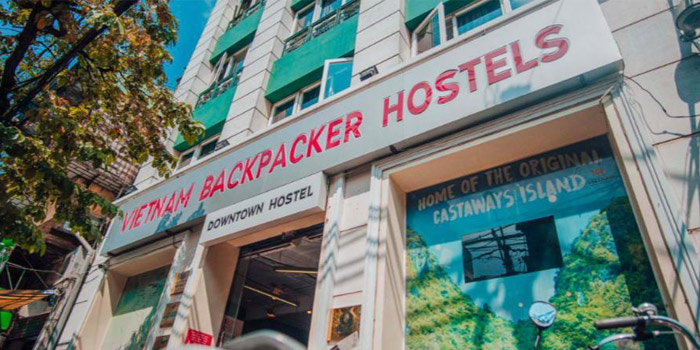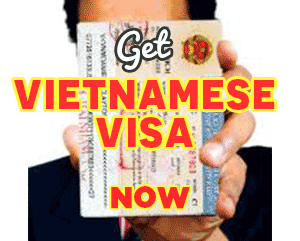Vietnam is a dream destination for budget travelers, offering stunning landscapes, rich culture, and mouthwatering cuisine—all at an incredibly affordable price. With careful planning and smart strategies, it’s entirely possible to explore this Southeast Asian gem on just $20 a day. This ultimate guide will walk you through everything from pre-trip preparations to on-the-ground hacks, ensuring you experience Vietnam’s magic without draining your wallet.
Table of Contents
Vietnam on a Budget: Introduction to $20/Day Travel

Traveling Vietnam on a tight budget doesn’t mean missing out on unforgettable experiences. The country’s affordability makes it a haven for backpackers, with low-cost accommodations, cheap transportation, and delicious street food available at every turn. Whether you’re wandering through Hanoi’s Old Quarter, cruising Halong Bay, or exploring the Mekong Delta, Vietnam delivers incredible value for money.
This guide will break down exactly how to stretch your dollars (or dong) while still enjoying the best of Vietnam. From finding the cheapest beds to uncovering hidden free attractions, we’ll cover every aspect of budget travel in this vibrant country.
Why Vietnam is Perfect for Budget Travelers
Vietnam’s cost of living is significantly lower than in Western countries, making it ideal for travelers on a shoestring budget. Even in tourist hotspots, prices remain reasonable compared to neighboring Thailand or Cambodia. Street food meals cost as little as $1-2, while hostel dorms can be found for $5-10 per night. Public transportation is efficient and affordable, and many of Vietnam’s most breathtaking sights—like its beaches, temples, and rural landscapes—are free to explore.
Beyond affordability, Vietnam offers an incredibly diverse travel experience. You can trek through misty mountains in Sapa, dive into the bustling streets of Ho Chi Minh City, or relax on the pristine shores of Phu Quoc—all without breaking the bank. The key is knowing where to save and where to splurge wisely.
The Reality of Traveling on $20 a Day
While $20 a day is achievable, it requires discipline and smart choices. This budget covers basic necessities—accommodation, food, and local transport—but leaves little room for luxury. If you want to indulge in tours, private rooms, or upscale dining, you’ll need to adjust accordingly. However, with strategic planning, you can enjoy Vietnam’s highlights while staying within this budget.
The northern regions (Hanoi, Sapa) tend to be cheaper than the south (Ho Chi Minh City, Mekong Delta), so allocating more funds for pricier destinations helps balance expenses. Flexibility is also crucial—opting for overnight buses, eating street food, and staying in dorms will keep costs down.
Mindset Shifts for Budget Travel in Vietnam
Embracing a backpacker’s mindset is essential. This means prioritizing experiences over comfort, being open to spontaneous adventures, and learning to haggle politely. Vietnamese culture is welcoming, and locals appreciate travelers who make an effort to engage respectfully. Learning a few basic phrases (“xin chào” for hello, “cảm ơn” for thank you) goes a long way in building rapport and sometimes even scoring better deals.
Another key shift is accepting that not every day will be perfect. You might encounter language barriers, crowded buses, or unexpected expenses. However, these challenges often lead to the most memorable stories. Traveling on $20 a day in Vietnam isn’t just about saving money—it’s about immersing yourself in the local way of life.
Pre-Trip Planning: Maximizing Your Budget Before You Arrive in Vietnam

Smart planning before your trip can make a huge difference in keeping costs low. From booking flights at the right time to securing affordable visas, every dollar saved before departure means more to spend on experiences in Vietnam.
Finding Cheap Flights to Vietnam
Airfare is usually the biggest upfront expense. To score the best deals:
- Be flexible with dates: Flying mid-week or during shoulder seasons (March-May, September-November) often yields lower prices.
- Use flight comparison tools: Skyscanner, Google Flights, and Kayak allow you to compare prices across airlines and set up price alerts.
- Consider alternative airports: Sometimes flying into Hanoi (HAN) is cheaper than Ho Chi Minh City (SGN), or vice versa.
Budget airlines like VietJet Air and Bamboo Airways frequently offer promotions, but be mindful of hidden fees for baggage. If you’re traveling from Europe or the Americas, look for deals with major carriers like Qatar Airways or Singapore Airlines, which sometimes have competitive rates.
Visa Requirements and Cost-Saving Tips
Vietnam’s visa policy varies by nationality. Many travelers can obtain an e-visa (valid for 30 days) for around $25, which is the most budget-friendly option. Some nationalities qualify for visa-free entry for short stays, so check the latest regulations on the Vietnamese immigration website.
Avoid last-minute visa-on-arrival services, as they often come with additional processing fees. Applying in advance through the official e-visa portal ensures a smooth entry and avoids unexpected costs.
Packing Smart to Avoid Extra Expenses
Packing light saves money on baggage fees and makes moving around easier. Essentials include:
- Versatile clothing: Lightweight, quick-dry fabrics suitable for Vietnam’s humid climate.
- Reusable water bottle: Tap water isn’t safe to drink, but many hostels offer free filtered water.
- Basic medical kit: Band-aids, antiseptic, and stomach medicine to avoid overpriced pharmacy purchases.
Leave unnecessary electronics at home—Vietnam has affordable SIM cards for internet access, so you don’t need expensive roaming plans.
Affordable Accommodation: Finding Budget-Friendly Stays in Vietnam

Vietnam offers a wide range of budget accommodations, from social hostels to charming homestays. Knowing where to look and how to book can save you a significant amount of money.
Hostels: The Backpacker’s Best Friend
Hostels are the go-to for budget travelers, with dorm beds averaging $5-10 per night. Popular chains like Vietnam Backpacker Hostels and Hanoi Rocks offer clean facilities, free breakfast, and social atmospheres. Look for hostels with kitchens to save on meals.
Many hostels also organize affordable tours, such as Halong Bay cruises or motorbike rentals, often at better rates than external agencies. Booking platforms like Hostelworld and Booking.com allow you to filter by price and read recent reviews.
Guesthouses and Budget Hotels
For more privacy, guesthouses offer private rooms for $10-15 per night. These are plentiful in cities like Hoi An and Dalat, where family-run establishments provide a cozy, local experience. Negotiating rates for longer stays (3+ nights) can further reduce costs.
Small hotels in less touristy areas are also affordable. Avoid places near major attractions, as prices spike due to demand. Instead, stay a short walk away—you’ll save money and discover hidden local gems.
Homestays: Immersive and Inexpensive
Rural areas like Sapa and the Mekong Delta offer homestays for $8-15 per night, often including home-cooked meals. This is a fantastic way to experience Vietnamese hospitality while supporting local families. Websites like Homestay.com and local tour agencies can help arrange these stays.
Homestays are particularly rewarding in ethnic minority villages, where you’ll learn about traditional lifestyles. Just be prepared for basic amenities—think shared bathrooms and simple bedding.
Transportation Hacks: Navigating Vietnam Efficiently on a Limited Budget
Getting around Vietnam is surprisingly affordable if you know which options to choose. From overnight buses to motorbike rentals, here’s how to save on transport.
Buses: The Cheapest Way to Travel Long Distances
Vietnam’s bus network is extensive and budget-friendly. Companies like Sinh Tourist and Futa Bus Lines offer comfortable sleeper buses for intercity travel, with tickets as low as $10-15 for a 10-hour journey. Booking in advance ensures better seats and avoids last-minute price hikes.
Overnight buses are a smart choice—they save on a night’s accommodation and maximize daylight for exploring. Just bring earplugs and a neck pillow for comfort.
Trains: Scenic but Slightly Pricier
Trains are more expensive than buses but offer stunning coastal views, especially on the Hanoi to Da Nang route. Hard seats are the cheapest option, while sleeper berths provide comfort for long trips. Book through Baolau or 12Go Asia for the best rates.
If you’re not in a rush, trains are a relaxing way to see the countryside. Opt for daytime rides to enjoy the scenery without paying for a sleeper.
Motorbikes: Freedom on Two Wheels
Renting a motorbike ($5-10 per day) is a popular way to explore Vietnam independently. The Hai Van Pass between Hue and Da Nang is a must-ride for adventure seekers. Always wear a helmet, check the bike thoroughly before renting, and ensure your travel insurance covers motorbike accidents.
For long-term rentals, negotiate weekly rates. Many travelers buy used bikes in Hanoi and sell them in Ho Chi Minh City, but this requires time and mechanical know-how.
Delicious and Cheap Eats: Savoring Vietnamese Cuisine for Under $20
Vietnamese food is not only delicious but also incredibly affordable. Street food stalls and local markets offer meals for $1-3, making it easy to eat well on a budget.
Street Food Must-Tries
- Pho: Vietnam’s iconic noodle soup, best enjoyed at small sidewalk stalls for $1-2.
- Banh Mi: Crusty baguettes filled with meats, veggies, and pate, typically $1-1.50.
- Bun Cha: Grilled pork with noodles and herbs, a Hanoi specialty for $2-3.
Follow the locals—the busiest stalls usually serve the freshest, tastiest food. Avoid touristy areas where prices are inflated.
Local Markets and Com Binh Dan
Markets like Ben Thanh (Ho Chi Minh City) and Dong Xuan (Hanoi) are great for fresh fruit, snacks, and cheap meals. Com Binh Dan (rice with side dishes) is a filling lunch option for $1-2.
Self-catering is another way to save. Buy bread, fruit, and yogurt from supermarkets for quick, cheap breakfasts.
Free and Low-Cost Activities: Exploring Vietnam’s Gems Without Breaking the Bank
Vietnam is full of incredible experiences that cost little to nothing. From hiking to temple visits, here’s how to enjoy the country without spending much.
Nature and Hiking
- Sapa’s Rice Terraces: Trek through villages for free (though hiring a local guide enhances the experience).
- Phong Nha Caves: Some caves are free to explore, while others require affordable entry fees.
Cultural Sites
- Temples and Pagodas: Many, like Hanoi’s Temple of Literature, charge minimal entry fees ($1-2).
- Walking Tours: Free tours are available in major cities, often tip-based.
Sample Itineraries: A Day-by-Day Guide to Thrifty Travel in Vietnam
To help visualize a $20-a-day budget, here’s a sample daily breakdown:
- Accommodation: $5 (dorm bed)
- Food: $7 (street food + market snacks)
- Transport: $3 (local buses/motorbike rental split over days)
- Activities: $5 (temple entry, cheap beer, or scooter fuel)
Adjust based on location—cities like Ho Chi Minh may require slightly higher allocations than rural areas.
Money Management Tips: Stretching Your $20 Further Each Day
- Withdraw large sums to avoid ATM fees.
- Haggle politely in markets (but not in restaurants).
- Track expenses with apps like Trail Wallet.
Avoiding Tourist Traps: Staying Safe and Savvy on a Budget
- Skip overpriced tours—book directly with locals.
- Beware of taxi scams—use Grab or metered taxis.
- Carry small bills to avoid being shortchanged.
Vietnam on $20 a Day: Is it Truly Possible? Challenges and Considerations
While doable, this budget requires sacrifices. You’ll miss out on luxury experiences and may face occasional discomfort. However, the rewards—authentic interactions, unexpected adventures, and a deeper connection to Vietnam—are priceless.
Conclusion
Traveling Vietnam on $20 a day is not only possible but incredibly rewarding. With strategic planning, smart spending, and a sense of adventure, you can experience the best of this beautiful country without overspending. Embrace the local lifestyle, savor every bowl of pho, and let Vietnam’s charm unfold—all while keeping your budget intact. Happy travels!
`



Leave a Reply